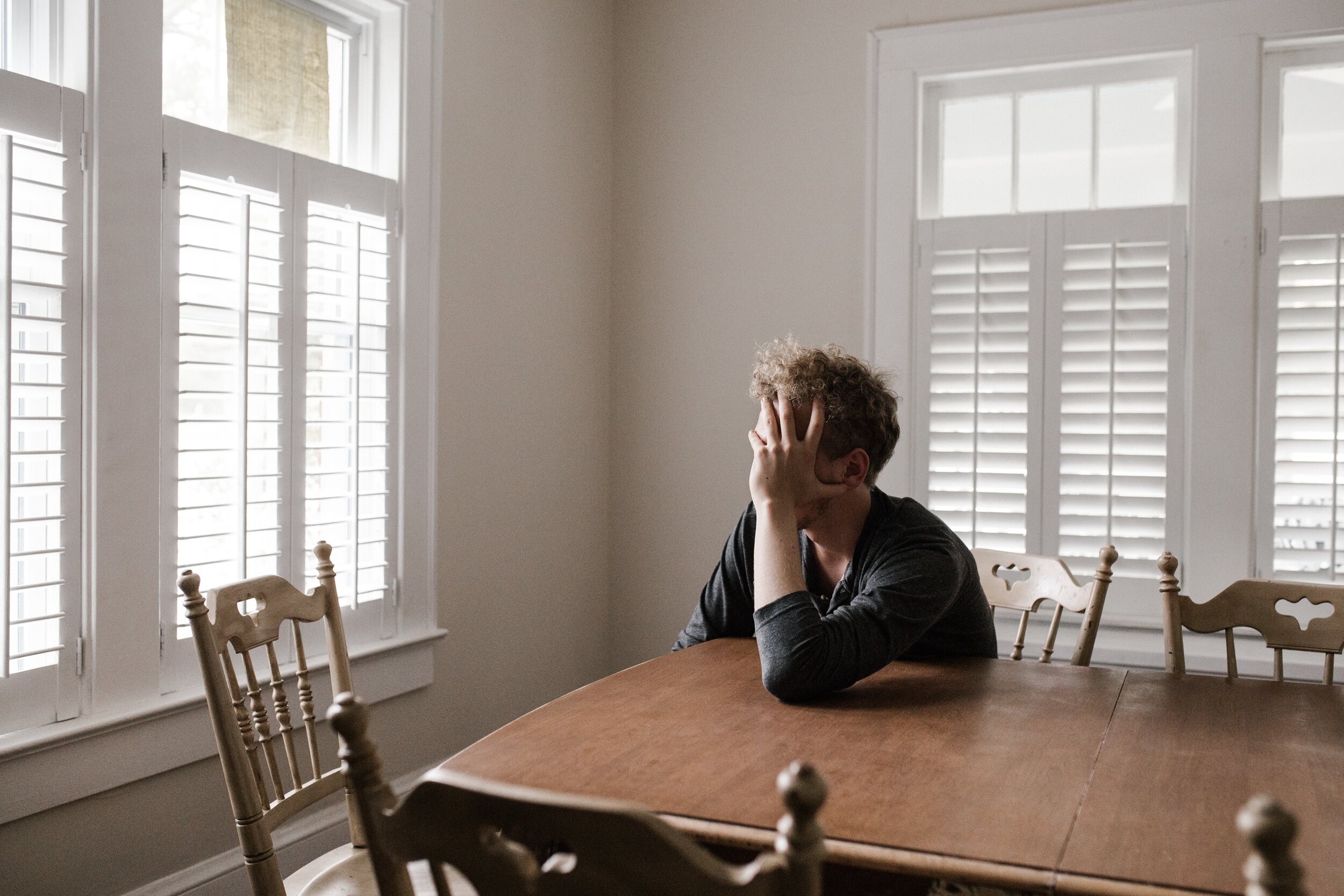The Rise of Anxiety and Depression: Directions for a Difficult Time
Have you found yourself experiencing more anxiety or depression? Do you see others you know struggling with anxiety or depression? Try this simple thought experiment to reflect on how you’re feeling right now.
Think of all the people with whom you are in close relationship in your life — friends, family, partners, and even yourself. Now, split these people into two categories.
The first category is for those you believe have not been impacted much by the COVID-19 pandemic that began a year and a half ago. The second is for those you believe have fallen anywhere on the spectrum from slightly to significantly impacted.
Anxiety and depression look different for everyone, but some examples of the impact we may be experiencing during the pandemic are increased fear or worry, sadness, isolation, or grief over losses such as deaths, loss of relationships, and expectations of what life should have been like.
Take your time to count and determine the percentage of people on both sides. What numbers did you come up with? I’ve noticed around 40% and 60% in those I love.
The Leading Mental Health Disorders: Anxiety and Depression
People are often aware that anxiety and depression are the most pervasive of all mental health disorders in the United States. Not only has the number of people affected by anxiety and depression been disproportionately high for many years, it has increased throughout the pandemic.
A recent study from the Centers for Disease Control and Prevention (CDC) discovered that between August 2020 and February 2021, the percentage of adults with recently identified symptoms of an anxiety or depressive disorder increased from 36.4% to 41.5%. That’s about 136.2 million Americans.
Whether it’s stress, grief, anxiety, or depression, many are suffering from the effects of the pandemic. Experiencing occasional anxiety and sadness are normal parts of life, but a struggle often begins when the symptoms increase in frequency and severity.
Depending on how anxiety and/or depressive symptoms are impacting you, the level of distress or how much you feel impacted by them will determine the next steps to overcome symptoms associated with anxiety and depression.
Below is an overview of some general symptoms of anxiety or depression.
Symptoms of Anxiety and Depression
Anxiety and depression can be formally diagnosed as a number of specific disorders. Prior to speaking with a professional to learn more about the nature of your symptoms, you may notice common experiences people have before they realize they actually meet criteria for a formal diagnosis.
Everyone experiences anxiety and depression differently, so it is important to understand the possible symptoms within the context of your life rather than comparing them to what anxiety or depression looks like for someone else.
For some individuals who suffer from anxiety, it is a physical experience for others anxiety can occur as part of distorted thinking. You may notice some of the following symptoms if you experience anxiety:
anxious or worried thoughts that are difficult to control
feeling restless or on edge
fatigue
difficulty with concentration or focus
irritability
muscle tension
difficulty falling asleep, staying asleep, or having restless sleep
increased heart rate
breathing rapidly or difficulty catching your breath
gastrointestinal problems
shaking or trembling
the feeling of “butterflies,” “knots,” or a pang in your stomach
Depression, similar to anxiety, has both physical and mental and emotional manifestations. The following symptoms may resonate with you if you experience some form of depression:
feeling sad, empty, or hopeless
fatigue
diminished interest in activities you used to enjoy
significant weight gain/loss or increase/decrease in appetite
difficulty falling or staying asleep or oversleeping
feeling worthless or excessive guilt
difficulty with concentration or focus
recurrent thoughts of death or having a plan to die
headaches or pain
One important note is that anxiety and depressive symptoms can both mimic or be mistaken for medical conditions, so your first line of defense should be to discuss these symptoms with your primary care physician or psychiatrist to rule out any underlying causes.
If you feel your symptoms are manageable and want to begin to strengthen your mental health, there are several activities you can try to improve your mood and achieve relaxation. These include:
Improving your diet, sleep habits, and exercise which can help to regulate your mind and body, release endorphins, and boost your mood.
Reaching out to your support system and practicing mindfulness.
These strategies can also help to improve your sense of safety and ability to focus on the present moment, especially as our minds wander into a worrisome future and hope may feel out of reach.
How to Move Forward
When depression and anxiety begin to impact your ability to function, whether at work, school, home, or elsewhere, you need to start considering additional options for help.
The same study from the CDC that determined how anxiety and depressive disorders have increased among Americans also determined that the percentage of individuals who reported that their mental health needs had gone unmet increased from 9.2% to 11.7%. As a therapist, this statistic is heart-wrenching to see, as everyone deserves help.
The good news is that most anxiety and depressive disorders can be treated effectively by outpatient mental health counseling. Medications can also help to alleviate symptoms, though they are not always necessary. For those who are experiencing more significant symptoms, the best treatment outcomes can occur through a combination of medication and outpatient mental health counseling.
Therapists at Kimberly Keiser & Associates are well equipped to provide these services through a variety of empirically based treatment methodologies. Although we are a specialty practice in the areas of sex therapy, trauma therapy, and couples counseling, the majority of our clients have some symptoms of anxiety and depression when seeking care.
We have adapted to a new normal in this pandemic and offer mental health services online, as well as in-person.
You may need to consider inpatient treatment if you cannot function at school, work, in your personal life, or if you have suicidal thoughts. If this is the case, please go to your nearest emergency room, call law enforcement, or go to your local inpatient mental health hospital — such as Avera Behavioral Center for those in Sioux Falls — for help. Your health and safety are the absolute priority!
Remember, there is help available and you have the capability to heal from not only what has happened in the past year and a half, but from any anxiety or depression that was present prior to that time. Your responsibility now is to receive the help you deserve in order to feel whole again.



